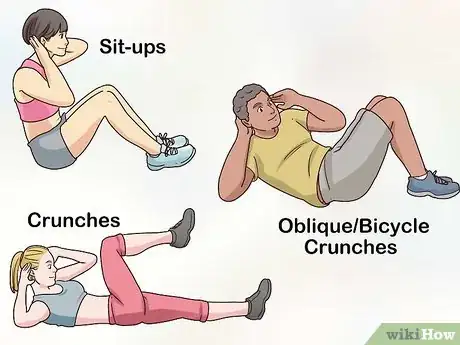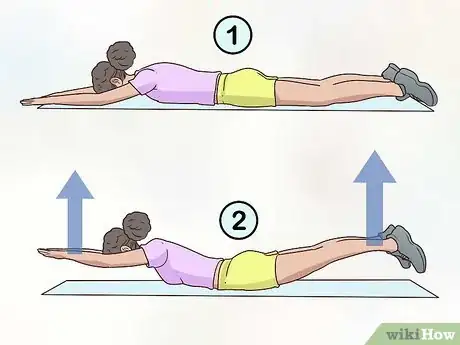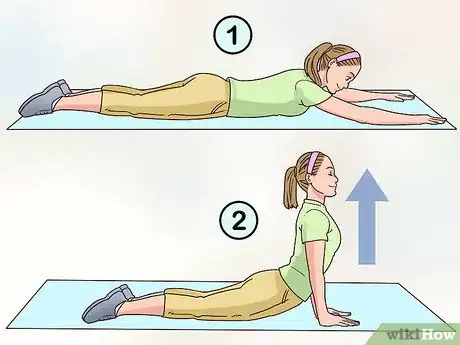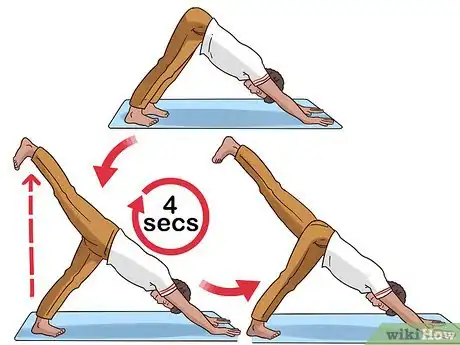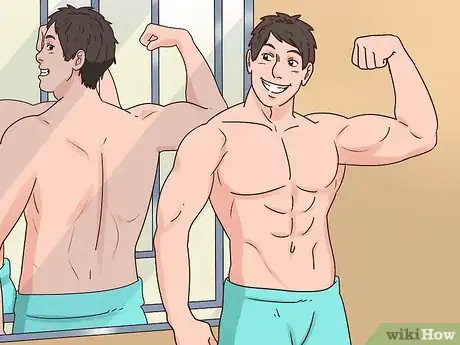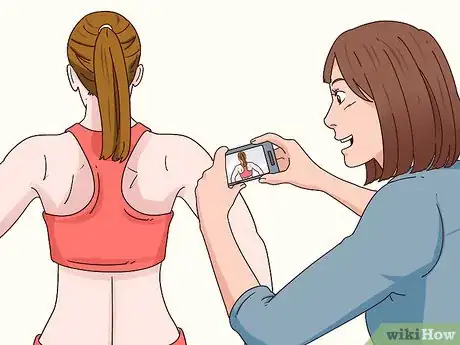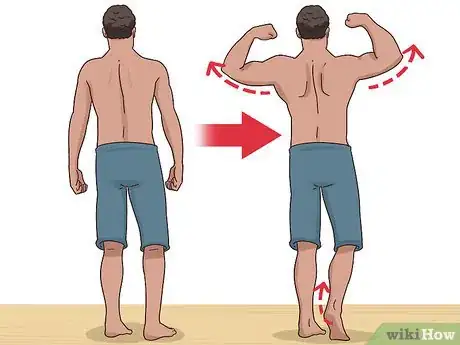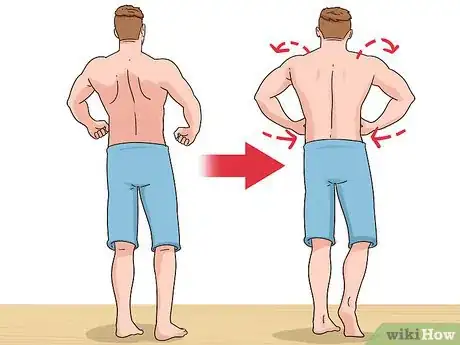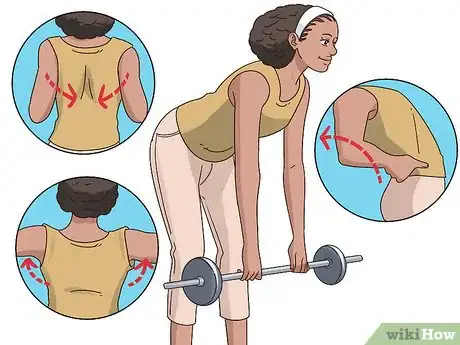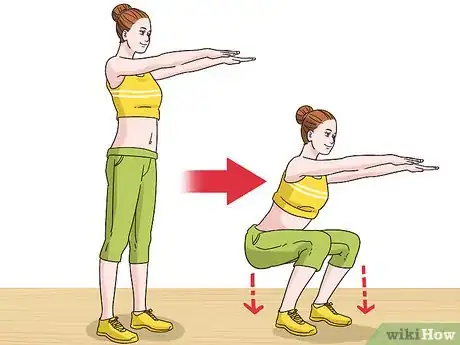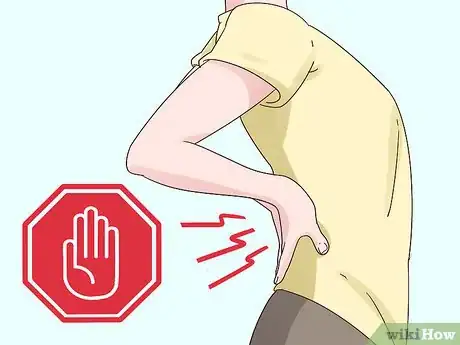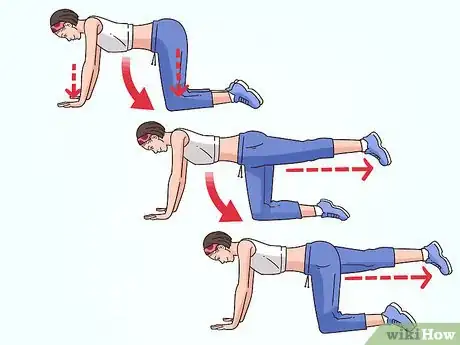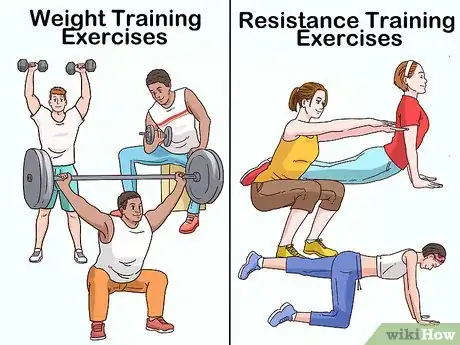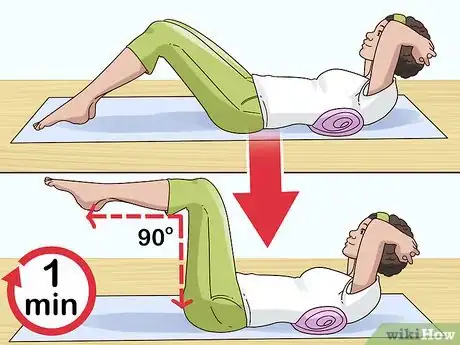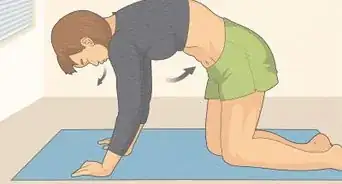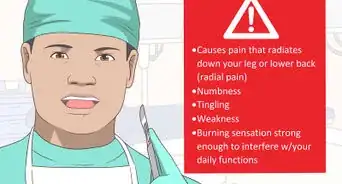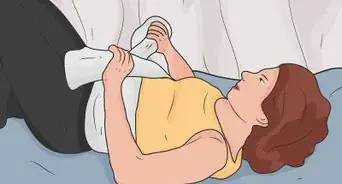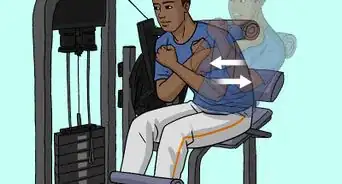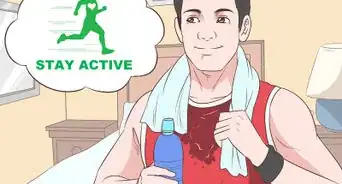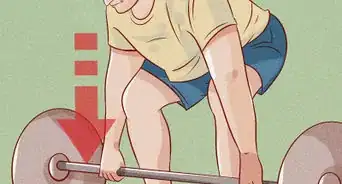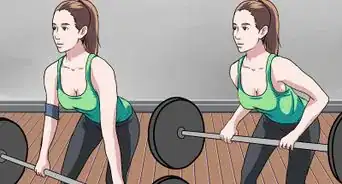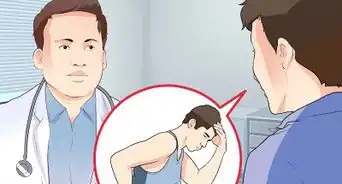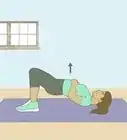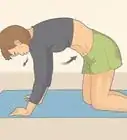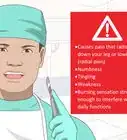This article was co-authored by Jason Myerson, DPT, DMT, OCS, FAAOMPT. Jason Myerson is a Physical Therapist and a Certified Orthopedic Specialist. He is affiliated with Performance Physical Therapy & Wellness with clinics located in Connecticut. He serves as adjunct faculty in the Physical Therapy Department at Quinnipiac University. Jason specializes in helping active people get back to hobbies, activities, and sports they love while utilizing an integrated approach to wellness. He holds an MA in Physical Therapy from Quinnipiac University and a Doctorate in Physical Therapy (DPT) from Arcadia University. He is Residency and Fellowship trained in Orthopedic Manual Therapy, achieved a Doctorate in Manual Therapy (DMT) and became a Fellow of the American Academy of Orthopedic Manual Physical Therapists (FAAOMPT).
There are 7 references cited in this article, which can be found at the bottom of the page.
This article has been viewed 85,455 times.
Flexing your back can help you work and engage your core during exercise. It can also be a great way to show off your muscles while taking photos. Flexing your back is easy with a few simple movements and some precision. Just make sure not to work so hard you strain yourself. Always stop flexing if you feel pain.
Steps
Using Exercises and Yoga Poses to Flex Your Back
-
1Do abdominal exercises. Abdominal exercises will flex you back each time you roll your body forward or to the side. Include a few abdominal exercises in your regular exercise routine. There are lots of different abdominal exercises you can try including:
-
2Try supermans. Lay down on your stomach with your arms straight out in front of you and your legs straight out behind you. Then, slowly lift your arms and legs off the ground by an inch or more (as much as is comfortable for you). Make sure to keep your arms and legs straight. Hold the pose for about 10 seconds or more and then lower them back down. Repeat this exercise a few times.[1]
- If lifting your arms and legs at the same time is too difficult, then start by lifting one leg and the opposite arm and holding the pose. Then, repeat the exercise with the other leg and the other opposite arm.
Advertisement -
3Perform the cobra pose. The cobra pose is a yoga pose that will flex your back. To get into the pose, start by laying down on your stomach with your hands planted on the floor under your shoulders and your hands straight out behind you. Your palms should be facing down towards the floor. Use your hands and arms to lift your chest off of the floor while keeping your legs straight out behind you. Look up towards the ceiling (or sky if you are outside) as you hold the pose. Hold the pose for about 10 seconds or more. Then, slowly lower yourself back down to the ground.[2]
-
4Try downward dog leg lifts. Place your hands flat on a yoga mat with your bottom pointed upward and your legs held straight. Lift up one leg as high as you can, while stretching your toes out straight. Hold for four seconds before placing your leg back on the ground. Repeat the motion with the other leg.[3]
Flexing Your Back for Poses
-
1Pose in front of a mirror. If you have a full length mirror at your home or a gym, use this as a guide. If there are two mirrors facing each other at your home or gym, this is a great place to pose as you'll be able to more easily see the reflection of your back.[4]
-
2Have a friend assist you. If you're flexing in practice for a competition, ask a friend for help. A friend can give you honest feedback about your poses. They can also agree to take pictures you can use to evaluate your techniques later on.[5]
-
3Try a rear double bicep pose. Flex both calves and then place one leg back slightly while keeping the calves and hamstrings flexed. Curl your arms and hold them above your head. Lean backward slightly and flex your back by pressing your shoulder blades together and moving your wrists backward slightly.[6]
- It does not matter which leg you hold back. Choose whichever leg you're most comfortable moving backwards.
-
4Do a rear lat spread pose. While flexing your calves, move one leg backwards. Hold your arms upward, bending them at the elbows so they curl towards one another. This will help crunch and flex your back. Then, stand up straight to stretch out your back and show its full length.[7]
Maintaining Flexed Back Muscles
-
1Be conscious of your back and core throughout a workout. If you're trying to build muscle via flexing your back, be conscious of how your back feels throughout a routine. Make sure your back feels continually engaged and make a point of squeezing, flexing, and stretching your back while doing things like aerobics and weight lifting.
-
2Squeeze your butt to keep your back engaged. If you're worried you're not engaging your back enough during a workout, squeeze your butt slightly. Squeezing your butt cheeks together will cause your back to flex slightly as well. It's a quick and easy trick to use to keep your back engaged during a workout.[8]
-
3Stop if you feel pain. If you feel pain or discomfort at any point while flexing, stop. Strain is a sign you're pushing your body too hard. If an exercise is causing you pain, you need a break.
Getting Movement Into Your Spine With Stretches
-
1Try tail wags to loosen your back. Get on your hands and knees, keeping your hands directly under your shoulders and your knees under your hips. Lift your left foot in the air, but leave your knee on the ground. Swing your foot to the left while you look over your shoulder so you feel your back stretching gently. Then, repeat this motion while swinging your foot to the right. Repeat on the right side.[9]
- This is a great exercise to loosen up your back before doing a full core or aerobics workout.
-
2Engage your core throughout your workout. Your core muscles are the muscles found around the center of your body and include your back muscles. Engage them during back exercises to most effectively work your back. Pull your pelvic muscles upward slightly while tightening your abdominal muscles. Your core muscles should be tight enough so that if someone bumped into you, you’d stay put. Brace your midsection slightly, as if you were bracing for a punch.[10]
- Keep your core engaged throughout workout routines to help flex and strengthen your back. For example, make a point of engaging your core during aerobics.
- You can also engage your core during things like weight training and resistance training. Keep your back flexed and your core engaged while lifting weights, for example.
-
3Do passive extension. Lie with a rolled towel under the bottom third of your shoulder blades. Lie down and bend your knees at a 90 degree angle. Hold your arms in whatever position is comfortable for you. Tuck in your pelvis so your lower back touches the floor and hold this stretch for about a minute.[11]
Expert Q&A
-
QuestionHow do you stretch your back?
 Jason Myerson, DPT, DMT, OCS, FAAOMPTJason Myerson is a Physical Therapist and a Certified Orthopedic Specialist. He is affiliated with Performance Physical Therapy & Wellness with clinics located in Connecticut. He serves as adjunct faculty in the Physical Therapy Department at Quinnipiac University. Jason specializes in helping active people get back to hobbies, activities, and sports they love while utilizing an integrated approach to wellness. He holds an MA in Physical Therapy from Quinnipiac University and a Doctorate in Physical Therapy (DPT) from Arcadia University. He is Residency and Fellowship trained in Orthopedic Manual Therapy, achieved a Doctorate in Manual Therapy (DMT) and became a Fellow of the American Academy of Orthopedic Manual Physical Therapists (FAAOMPT).
Jason Myerson, DPT, DMT, OCS, FAAOMPTJason Myerson is a Physical Therapist and a Certified Orthopedic Specialist. He is affiliated with Performance Physical Therapy & Wellness with clinics located in Connecticut. He serves as adjunct faculty in the Physical Therapy Department at Quinnipiac University. Jason specializes in helping active people get back to hobbies, activities, and sports they love while utilizing an integrated approach to wellness. He holds an MA in Physical Therapy from Quinnipiac University and a Doctorate in Physical Therapy (DPT) from Arcadia University. He is Residency and Fellowship trained in Orthopedic Manual Therapy, achieved a Doctorate in Manual Therapy (DMT) and became a Fellow of the American Academy of Orthopedic Manual Physical Therapists (FAAOMPT).
Physical Therapist & Certified Orthopedic Specialist Physical Therapist & Certified Orthopedic SpecialistExpert AnswerTo gently stretch your back, lie on one side with your knees bent up. Then, rock backwards so you roll to your other side, like pages falling in an open book. You could also sit in a chair with your arms crossed and your hands on your shoulders. Then, twist slowly side-to-side to stretch.
Physical Therapist & Certified Orthopedic SpecialistExpert AnswerTo gently stretch your back, lie on one side with your knees bent up. Then, rock backwards so you roll to your other side, like pages falling in an open book. You could also sit in a chair with your arms crossed and your hands on your shoulders. Then, twist slowly side-to-side to stretch.
References
- ↑ https://health.clevelandclinic.org/2015/09/got-back-pain-try-superman-3-exercises/
- ↑ https://www.active.com/health/articles/3-steps-to-do-cobra-pose
- ↑ http://www.fitbodyhq.com/fitness/learning-to-engage-your-glutes/
- ↑ http://bodybuildingcourse.com/free-posing-tips/
- ↑ http://bodybuildingcourse.com/free-posing-tips/
- ↑ http://bodybuildingcourse.com/free-posing-tips/
- ↑ http://bodybuildingcourse.com/free-posing-tips/
- ↑ http://www.shape.com/fitness/tips/how-engage-your-core-plus-7-abs-exercises-stronger-middle
- ↑ http://dailyburn.com/life/fitness/lower-back-stretches-relieve-stress/
